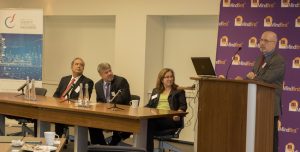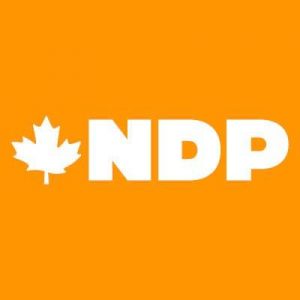
The Ontario Society of Professional Engineers (OSPE) sent an open letter to Mayor John Tory, providing recommendations on the report Developing Toronto’s Transit Network Plan to 2031, which will be considered by Toronto’s Executive Committee today.
OSPE recommends that Toronto take immediate action to advance new transit projects that will enable the rapid movement of riders to the downtown core. Furthermore, OSPE believes it is critical that the City prioritize the advancement of the Relief Line project ahead of all other recommended actions in order to shape a well-planned and functional future for Ontario.
Beyond providing relief to the extreme overcrowding at Bloor-Yonge station, the Relief Line offers a number of other potential advantages:
- Creation of a multi-modal hub in the core
- Creation of an interchange at Nathan Phillips Square at City Hall
- Creation of a strong connection to the Financial District, including universities, hospitals and public institutions
- No addition to already substantial pedestrian congestion at Union Station
- Shorter crossing of the Don River, which minimizes soil stabilization needs and results in relative cost savings versus other options
- Future development potential; optimization of line via extension to Sheppard Avenue
The Relief Line is an example of an evidence-based subway expansion project that will enhance local and regional economic growth and improve quality of life for riders.
OSPE’s recommendations:
- Council should authorize the Chief Planner and Executive Director, City Planning and the Chief Executive Officer, Toronto Transit Commission to work in partnership with Metrolinx to confirm station locations for optimal connections between the Relief Line and SmartTrack/Regional Express Rail, including future extensions of the Relief Line. Connection optimization will be more readily achieved if clarity regarding the core purpose(s) of the Relief Line is/are decided (i.e. line relief [rapid rider movement] meaning fewer stations, or local economic development meaning more stations).
- Council should support commencing the Environmental Project Report (EPR) for the Relief Line and issue the Notice of Commencement for the Environmental Assessment (EA)/Transit Project Assessment Process (TPAP).
As the voice of Ontario’s engineering community, OSPE’s open letter stands as just one of many actions we have taken to encourage the City of Toronto to retain expert engineering input on the topic of transit infrastructure to guarantee short and long term transportation planning that best serves the region.






The T.T.C.’s ‘relief line’ could best be installed above ground, in my opinion. Streetcars used to loop at Pape and Danforth. So, install a streetcar line at the old loop, run it down Pape, then jog east one block to Carlaw and tke it back to dundas street, from where it would run east to connect tot eh existing dudas car line. alternatively, run it from the loop overhead all the way to Lakeshore and from there connetc to the proposed Queens Quay LRT. I see tunnelling a new subway as a waste of time and tax dollars.
Hi Mike, thanks for sharing your comment; we appreciate when our readers share their opinions to foster discussion. Council certainly faces some critical decision-making come July.
Adequate financial support and management is definitely one of the most important factors to make successful mega infrastructure projects. As my observation and usage of the wonderful system of Hong Kong MTR subway during my recent business trips, some points I like to share below for the policy makers about the future TTC to be the part of the Big Move project in the south Ontario.
Based on the news reporting, the Provincial and City governments are still short of some financial resources for the public transit projects. The governments need think about optimizing the land use policies among the communities. According to the successful integrated rail-property development model in Hong Kong, consideration of the urban joint developments at the proposed transit stations is required. A good land use plan can result in double or triple win-win-win results for the governments, communities and the residents to enjoy the most advanced convenience and raise sufficient funds without increasing the property tax and transit fares as current situation. Most people don’t like to endlessly take out the money from his pocket without enjoying convenience and benefit for the new transportation construction. In addition, ensuring the efficient and well operated transportation transfer system is required for combining and optimizing local resources at different communities.
That’s my 2-cents sharing above. I am pleased to assist in collecting the related information of HK MTR if required. More open information and discussion is expected for the public.
Hello Sen, thank you for sharing your observations and insights with regards to Hong Kong’s MTR subway. We have passed along your ideas to our advocacy team for their reference. If you are interested in getting involved in OSPE’s advocacy efforts within the realm of infrastructure or otherwise, please feel free to reach out to us at advocacy@ospe.on.ca for more information. New engineering expertise and perspective is always welcomed.
Why spend billions when a few millions will suffice? toronto’s council has acted in an irresponsible manner.